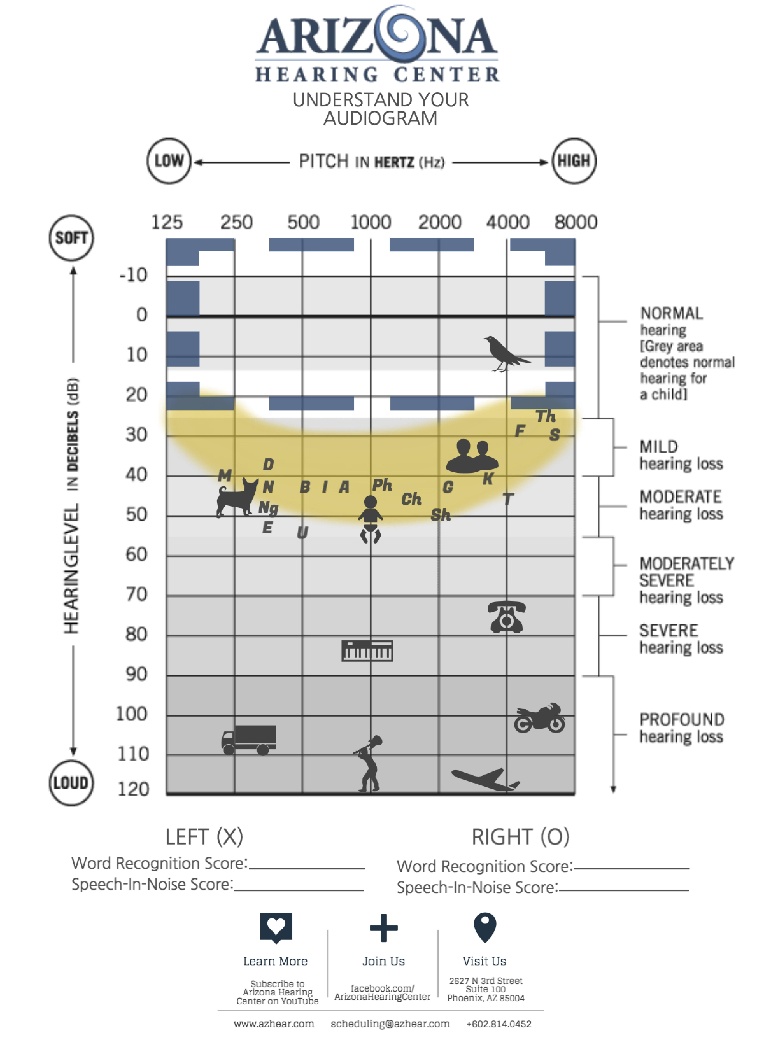How-To: Read Your Audiogram

Open the audiogram above in a separate tab.
The horizontal axis represents the frequencies of sound in Hertz (Hz). It goes from low frequencies (tuba) to high frequencies (flute).
The vertical axis represents the volume of sound in decibels (dB). It goes from very soft sounds to very loud sounds. Like a television, bigger numbers means louder.
Most human speech occurs in the yellow “speech banana.” Other common sounds are labeled on the audiogram. Where they are placed corresponds to their pitch and intensity—towards the right means higher pitch, towards the bottom means louder.
When a patient has their hearing threshold—the softest sounds they can hear—tested, they are instructed to raise a hand or push a button when they hear a beep. Those beeps can range from low to high, quiet to loud. Depending on whether or not the patient raises their hand, the audiologist can determine what sounds they can and can’t hear.
Symbols will indicate when the softest beep a patient could hear at a certain frequency. Blue X’s are the left ear and red O’s the right. If any of the symbols outside the dashed blue line area for healthy hearing (-10 and 25 dB), this indicates a hearing loss at that frequency. Hearing loss range from mild (25-40 decibels) to profound (90-120 decibels).
Speech recognition testing appears at the bottom. It should be in decibels (dB). This is the volume the patient is able to repeat words correctly 50% of the time.
“Word Recognition Score” should be a percentage. This score represents the patient’s ability to repeat words presented at a comfortable volume correctly. It is usually tested out of 25 words. This is often a measurement of clarity.
Other symbols like >, ], <, or [, may appear. These are bone conduction thresholds. > or ] represents the left ear, and < or [ the right. They are determined when the bone conductor is placed behind the ear or on the forehead. The device directly stimulates the inner ear. This determines the type of hearing loss: conductive, sensorineural, or mixed.
When is the last time you had an audiologic evaluation? It may be time for an update. Contact our board-certified doctors at Arizona Hearing Center by phone at 602.313.1243, or by email at scheduling@azhear.com.
Want to know more about hearing loss evaluation? Subscribe to at blog.azhear.com.



